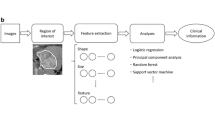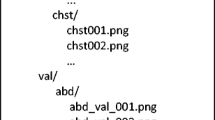Abstract
One of the biggest problems in the quantitative evaluation of brain tumor treatment is finding the tumor type. The ambiguous magnetic resonance imaging (MRI) strategy is currently the best classroom analysis tool for radiation-free brain tumors. Previous studies have shown that attractive imaging (MRI) features of different brain tumors can be used recently to make correction decisions. The manual part of a brain tumor to identify malignant growth is a tedious, tedious, and tedious task of teaching MRI clinical images. So we argued that there should be a planned segmentation of brain tumor images. Recently, programming sections that use deep learning strategies are imaginative projects. These techniques yield the best results in the classroom and are easier to perform than other access methods. The ultimate goal of this investment is to use MRI images of the framed brain to create deep neural system models that can be isolated between different types of heart tumors. To perform this task, deep learning is used. It is a type of instrument-based learning where the lower levels responsible for many types of higher-level definitions appear above the different levels of the screen. This is a section with various deep learning architectures. Convolutional neural network (CNN) is an iterative architecture that uses circular filters to perform complex operations in recent years. Use precision as the basis for system performance. Trained neural networks show about 98% accuracy. There are too many connections for the rain collection and the 95% credit collection. We plan to improve accuracy and eliminate excesses.
Access this chapter
Tax calculation will be finalised at checkout
Purchases are for personal use only
Similar content being viewed by others
References
Parveen, A. Singh, Detection of brain tumor in MRI images, using fuzzy C-means segmented images and artificial neural network, in Proceedings of the International Conference on Recent Cognizance in Wireless Communication & Image Processing: ICRCWIP-2014, (2016), pp. 123–131. https://doi.org/10.1007/978-81-322-2638-3_14
A. Heba Mohsen El-Sayed et al., Classification using deep learning neural networks for brain tumors. Future Comput. and Inf. J. 3(1), 68–71. June 2018, Received 26 October 2017, Accepted 5 December 2017, Available online 24 December 2017 (2017). https://doi.org/10.1016/j.fcij.2017.12.001
A. Javeria et al., Big data analysis for brain tumor detection: Deep convolutional neural networks. Futur. Gener. Comput. Syst. 87 (2018). https://doi.org/10.1016/j.future.2018.04.065
M. Herland, T.M. Khoshgoftaar, R. Wald, A review of data mining using big data in health informatics. J. Big Data 1(1), 2 (2014)
J. Sun, C.K. Reddy, Big data analytics for healthcare, in Proceedings of the 19th ACM SIGKDD International Conference on Knowledge Discovery and Data Mining, 2013, pp. 1525–1525
C. Mike, W. Hoover, T. Strome, S. Kanwal, Transforming health care through big data strategies for leveraging big data in the health care industry, 2013. http://ihealthtran.com/iHT2BigData 2013.pdf
H. Wang, H.-S. Choi, N. Agoulmine, M.J. Deen, J.W.-K. Hong, Information-based sensor tasking wireless body area networks in U-health systems. Proceedings of the 2010 International Conference on Network and Service Management, Niagara Falls, ON, Canada. 25–29 October 2010, pp. 517–522
A. Zanella, N. Bui, A. Castellani, L. Vangelista, M. Zorzi, Internet of things for smart cities. IEEE Internet Things J. 1(1), 22–32 (2014)
H. Bauer, M. Patel, J. Veira, The Internet of Things: Sizing up the Opportunity (McKinsey& Company, New York, 2016) Available from: https://www.mckinsey.com/industries/semiconductors/our-insights/the-internet-of-things-sizing-up-the-opportunity
Amyra, Internet of Things in healthcare: Challenges and applications. Technology and Apps (2019). https://www.valuecoders.com/blog/technology-and-apps/iot-in-healthcare-benefits-challenges-and-applications/
T. Devendran, D.A. Agnes Archana, et al., Challenges and issues of healthcare in the internet of things. Int. J. Latest Trends Eng. Technol. (2018). Special Issue April 2018, pp. 86–91 e-ISSN:2278-621X
Y. Singh, A.S. Chauhan, Neural networks in data mining. J. Theor. Appl. Inf. Technol. 5(6), 37–42 (2005)
Machine learning algorithms: A review AyonDey. Int. J. Comput. Sci. Inf. Technol. 7(3), 1174–1179 (2016)
Y. Li, C. Wu, L. Guo, C.-H. Lee, Y. Guo, Wiki-health: A big data platform for health sensor data Management. (2014). https://doi.org/10.4018/978-1-4666-6118-9.ch004
M. Haghighat, M. Abdel-Mottaleb, W. Alhalabi, Discriminant correlation analysis: Real-time feature level fusion for multimodal biometric recognition. IEEE Trans. Inf. Forensics Secur. 11(9), 1984–1996 (2016)
Z. Baloch, F. Shaikh, M. Unar, A context-aware data fusion approach for health-IoT. Int. J. Inf. Technol. (2018). https://doi.org/10.1007/s41870-018-0116-1
A. Lisa, D.H. Gustafson, The role of technology in health care innovation: A commentary. J. Dual Diagn. 9(1), 101–103 (2013). Author manuscript; available in PMC 2014 Jan 1. Published online 2012 Nov 27. https://doi.org/10.1080/15504263.20
M. Gong et al., Fuzzy C-means clustering with local information and kernel metric for image segmentation. IEEE Trans. Image Process. 22(2), 573–584 (2013)
J.D. Rudie et al., Emerging applications of artificial intelligence in neuro-oncology. Radiology 290(3), 607–618 (2019). https://doi.org/10.1148/radiol.2018181928
G.S. Tandel, M. Biswas, O.G. Kakde, A. Tiwari, H.S. Suri, M. Turk, J.R. Laird, C.K. Asare, A.A. Ankrah, N.N. Khanna, B.K. Madhusudhan, L. Saba, J.S. Suri, A review on a deep learning perspective in brain cancer classification. Cancers 11(1), 111 (2019). https://doi.org/10.3390/cancers11010111
S. Kumar, S. Maninder, Big data analytics for the healthcare industry: Impact, applications, and tools. Big Data Min. Anal. 2, 48–57 (2019). https://doi.org/10.26599/BDMA.2018.9020031
R. Rastogi et al., Intelligent personality analysis on indicators in IoT-MMBD enabled environment, in Multimedia Big Data Computing for IoT Applications: Concepts, Paradigms, and Solutions, ed. by S. Tanwar, S. Tyagi, N. Kumar, (Springer, Singapore, 2020), pp. 185–215. https://doi.org/10.1007/978-981-13-8759-3_7
R. Rastogi, D.K. Chaturvedi, S. Satya, N. Arora, P. Trivedi, M. Gupta, P. Singhal, M. Gulati, MM big data applications: Statistical resultant analysis of psychosomatic survey on various human personality indicators. ICCI 2018 Paper as Book Chapter, Chapter 25, © Springer Nature Singapore Pte Ltd. (2020). Book Subtitle: Proceedings of Second International Conference on Computational Intelligence 2018, ISBN: 978-981-13-8221-5, Online ISBN 978-981-13-8222-2, Chapter doi: https://doi.org/10.1007/978-981-13-8222-2_25
Acknowledgment
We would like to thank the seniors of ABES Engineering College, Ghaziabad, and Dayalbagh Educational Institute, Agra, and the experts from Tata Consultancy Services for their extraordinary support in this research process. The infrastructure and research samples by different labs have been collected. We pay our sincere thanks to all direct and indirect supporters.
Author information
Authors and Affiliations
Corresponding author
Editor information
Editors and Affiliations
Annex
Annex
1.1 Key Terms and Definitions
- Brain Tumors:
-
A brain tumor is a mass or an abnormal growth of cells in the brain. There are several types of brain tumors. Some brain tumors are noncancerous (benign), and some brain tumors are cancerous (malignant).
- Healthcare 4.0:
-
Healthcare 4.0 is a term that has recently emerged from Industry 4.0. Today, the healthcare sector is more digital than it has been for decades. For example, X-ray emission and magnetic resonance imaging to computer tomography, ultrasound scanning to electromedical recording.
- Confusion Matrix :
-
A confusion matrix is a table that is often used to describe the performance of a classification model (or “classification”) on an experimental dataset with known actual values. This allows you to visualize the performance of your algorithm.
- Machine Learning:
-
Machine learning is an artificial intelligence (AI) application that provides systems with the ability to automatically learn and improve their experience without explicit programming. Machine learning focuses on develo** computer programs that can access data and use it for your own learning.
- Artificial Intelligence:
-
Artificial intelligence (AI) is a simulation of human intelligence on a machine that is programmed to think and mimic its behavior like a human. The term also applies to all machines that have functions related to the human mind, such as learning and problem-solving.
- Deep Neural Network:
-
Deep neural network (DNN) is an artificial neural network (ANN) with several layers between the input and output layers. DNN finds the right mathematical operation to transform an input into an output, whether linear or nonlinear.
- Big Data :
-
An extensive data set that can be analyzed by a computer to reveal patterns, trends, and relationships, especially in relation to human behavior and interactions.
- Internet of Things:
-
The IoT is a system of interconnected computing devices of machines and digital machines that provides a unique identifier and the ability to send data over a network without the need for person-to-person or computer-to-computer interaction. It is equipped.
1.2 B. Additional Readings
-
Brain Tumors-Types of Brain Tumors
https://www.aans.org/Patients/Neurosurgical-Conditions-and-Treatments/Brain-Tumors
-
2016 WHO Classification of Tumors of the Central Nervous System
https://braintumor.org/wp-content/assets/WHO-Central-Nervous-System-Tumor-Classification.pdf
-
Tumor Types-Understanding Brain Tumors
https://braintumor.org/brain-tumor-information/understanding-brain-tumors/tumor-types/
-
Classification of Brain Tumors and Grade Using MRI Textures
https://www.ncbi.nlm.nih.gov/pmc/articles/PMC2863141/
-
Neurological Surgery-Types of Brain Tumors
https://www.neurosurgery.pitt.edu/centers/neurosurgical-oncology/brain-and-brain-tumors/types
Rights and permissions
Copyright information
© 2022 The Author(s), under exclusive license to Springer Nature Switzerland AG
About this chapter
Cite this chapter
Rastogi, R., Chaturvedi, D.K., Sagar, S., Tandon, N., Rastogi, A.R. (2022). Deep Learning Application in Classification of Brain Metastases: Sensor Usage in Medical Diagnosis for Next Gen Healthcare. In: Nandan Mohanty, S., Chatterjee, J.M., Satpathy, S. (eds) Internet of Things and Its Applications. EAI/Springer Innovations in Communication and Computing. Springer, Cham. https://doi.org/10.1007/978-3-030-77528-5_6
Download citation
DOI: https://doi.org/10.1007/978-3-030-77528-5_6
Published:
Publisher Name: Springer, Cham
Print ISBN: 978-3-030-77527-8
Online ISBN: 978-3-030-77528-5
eBook Packages: EngineeringEngineering (R0)




